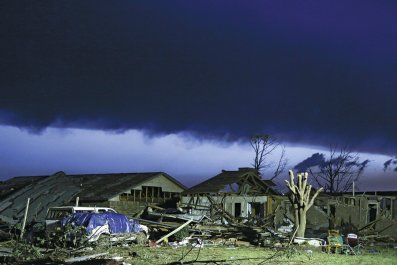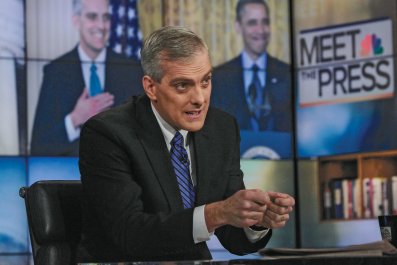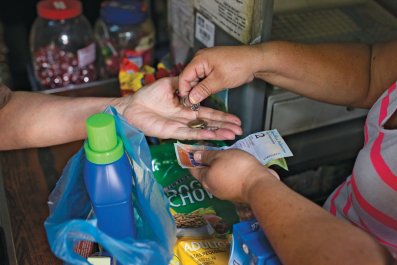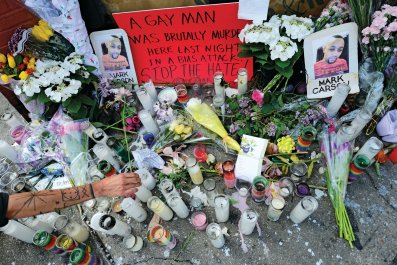WHEN THOMAS Joiner was 25 years old, his father—whose name was also Thomas Joiner and who could do anything—disappeared from the family's home. At the time, Joiner was a graduate student at the University of Texas, studying clinical psychology. His focus was depression, and it was obvious to him that his father was depressed. Six weeks earlier, on a family trip to the Georgia coast, the gregarious 56-year-old—the kind of guy who was forever talking and laughing and bending people his way—was sullen and withdrawn, spending days in bed, not sick or hungover, not really sleeping.
Joiner knew enough not to worry. He knew that the desire for death—the easy way out, the only relief—was a symptom of depression, and although at least 2 percent of those diagnosed make suicide their final chart line, his father didn't match the suicidal types he had learned about in school. He wasn't weak or impulsive. He wasn't a brittle person with bad genes and big problems. Suicide was understood to be for losers, basically, the exact opposite of men like Thomas Joiner Sr.—a successful businessman, a former Marine, tough even by Southern standards.
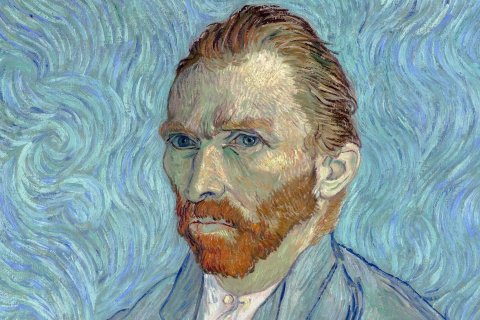
But Dad had left an unmade bed in a spare room, and an empty spot where his van usually went. By nightfall he hadn't been heard from, and the following morning Joiner's mother called him at school. The police had found the van. It was parked in an office lot about a mile from the house, the engine cold. Inside, in the back, the police found Joiner's father dead, covered in blood. He had been stabbed through the heart.
The investigators found slash marks on his father's wrists and a note on a yellow sticky pad by the driver's seat. "Is this the answer?" it read, in his father's shaky scrawl. They ruled it a suicide, death by "puncture wound," an impossibly grisly way to go, which made it all the more difficult for Joiner to understand. This didn't seem like the easy way out.
Back home for the funeral, Joiner's pain and confusion were compounded by ancient taboos. For centuries suicide was considered an act against God, a violation of law, and a stain on the community. He overheard one relative advise another to call it a heart attack. His girlfriend fretted about his tainted DNA. Even some of his peers and professors—highly trained, doctoral-level clinicians—failed to offer a simple "my condolences." It was as though the Joiner family had failed dear old Dad, killed him somehow, just as surely as if they had stabbed him themselves. To Joiner, however, the only real failing was from his field, which clearly had a shaky understanding of suicide.
Survivors of a suicide are haunted by the same whys and hows, the what-ifs that can never be answered. Joiner was no different. He wanted to know why people die at their own hands: What makes them desire death in the first place? When exactly do they decide to end their lives? How do they build up the nerve to do it? But unlike most other survivors of suicide, for the last two decades he has been developing answers.
Joiner is 47 now, and a chaired professor at Florida State University, in Tallahassee. Physically, he is an imposing figure, 6-foot-3 with a lantern jaw and a head shaved clean with a razor. He wears an off-and-on beard, which grows in as heavy as iron filings. The look fits his work, which is dedicated to interrogating suicide as hard as anyone ever has, to finally understand it as a matter of public good and personal duty. He hopes to honor his father, by combating what killed him and by making his death a stepping stone to better treatment. "Because," as he says, "no one should have to die alone in a mess in a hotel bathroom, in the back of a van, or on a park bench, thinking incorrectly that the world will be better off."
He is the author of the first comprehensive theory of suicide, an explanation, as he told me, "for all suicides at all times in all cultures across all conditions." He also has much more than a theory: he has a moment. This spring, suicide news paraded down America's front pages and social-media feeds, led by a report from the Centers for Disease Control and Prevention, which called self-harm "an increasing public health concern." Although the CDC revealed grabby figures—like the fact that there are more deaths by suicide than by road accident—the effort prompted only a tired spasm of talk about aging baby boomers and life in a recession. The CDC itself, in an editorial note, suggested that the party would rock on once the economy rebounded and our Dennis Hopper–cohort rode its hog into the sunset.
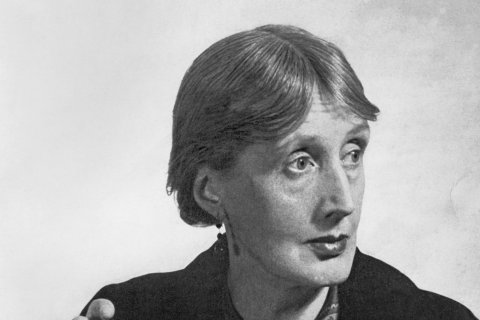
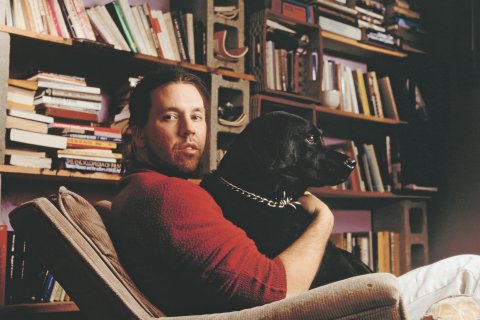


But suicide is not an economic problem or a generational tic. It's not a secondary concern, a sideline that will solve itself with new jobs, less access to guns, or a more tolerant society, although all would be welcome. It's a problem with a broad base and terrible momentum, a result of seismic changes in the way we live and a corresponding shift in the way we die—not only in America but around the world.
We know, thanks to a growing body of research on suicide and the conditions that accompany it, that more and more of us are living through a time of seamless black: a period of mounting clinical depression, blossoming thoughts of oblivion and an abiding wish to get there by the nonscenic route. Every year since 1999, more Americans have killed themselves than the year before, making suicide the nation's greatest untamed cause of death. In much of the world, it's among the only major threats to get significantly worse in this century than in the last.
The result is an accelerating paradox. Over the last five decades, millions of lives have been remade for the better. Yet within this brighter tomorrow, we suffer unprecedented despair. In a time defined by ever more social progress and astounding innovations, we have never been more burdened by sadness or more consumed by self-harm. And this may be only the beginning. If Joiner and others are right—and a landmark collection of studies suggests they are—we've reached the end of one order of human history and are at the beginning of a new order entirely, one beset by a whole lot of self-inflicted bloodshed, and a whole lot more to come.
THE RISE of suicide in the U.S. has been slow enough to sneak up on people. I realized this just the other day, on the phone with Catherine Barber, who directs the Means Matter Campaign, a suicide-prevention program at Harvard. A decade ago, she led the team that designed the National Violent Death Reporting System, a key source of federal data on premature exits. Because she's now focused on education and prevention, not data mining, it had been a few years since she looked at national numbers, so we logged on together.
We selected suicide from a drop-down menu of violent injuries that also included accidents, murder, and war, and we clicked send. Our screens blinked—hers in Boston, mine in New York—and up popped a simple black-and-white chart. The world's most depressing spreadsheet. There are as many intentional ways to die as there are people to imagine them, and we saw more of all of them: an almost 20 percent rise in the annual suicide rate, a 30 percent jump in the sheer number of people who died, at least 400,000 casualties in a decade—about the same toll as World War II and Korea combined.
We saw more jumping and shooting, poisoning and stabbing, drowning, and strangulation. We even saw more death by "unspecified means," a catch-all column for the most inventive forms of self-destruction—the swan dives into lava, the encounters with farm equipment. As she scrolled through the woe, Barber began to mutter to herself: "Oh, shoot ... yeah, that's no good ... the increase is across all methods ... dang."
This year, America is likely to reach a grim milestone: the 40,000th death by suicide, the highest annual total on record, and one reached years ahead of what would be expected by population growth alone. We blew past an even bigger milestone revealed in November, when a study lead by Ian Rockett, an epidemiologist at West Virginia University, showed that suicide had become the leading cause of "injury death" in America. As the CDC noted again this spring, suicide outpaces the rate of death on the road—and for that matter anywhere else people accidentally harm themselves. Somewhere Ralph Nader is smiling, but the takeaway is darkly profound: we've become our own greatest danger.
This development evades simple explanation. The shift in suicides began long before the recession, for example, and although the changes accelerated after 2007, when the unemployment rate began to rise, no more than a quarter of those new suicides have been tied to joblessness, according to researchers. Guns aren't all to blame either, since the suicide rate has grown even as the portion of suicides by firearm has remained stable.
The fact is, self-harm has become a worldwide concern. This emerged in the new Global Burden of Disease report, published in The Lancet this past December. It's the largest ever effort to document what ails, injures, and exterminates the species. But allow me to save you the reading. Humankind's biggest health problem is humankind.
The coordinating center for the GBD, the Institute for Health Metrics and Evaluation, provided Newsweek with custom data that bears this out in dramatic fashion. At first glance, the numbers seem to be uniformly good news. The suicide rate—the number of people per 100,000 who killed themselves each year—dropped in developed countries between 1990 to 2010 and grew only slightly overall. But these age-adjusted good tidings mask considerable trauma in the population at large.

Throughout the developed world, for example, self-harm is now the leading cause of death for people 15 to 49, surpassing all cancers and heart disease. That's a dizzying change, a milestone that shows just how effective we are at fighting disease, and just how haunted we remain at the same time. Around the world, in 2010 self-harm took more lives than war, murder, and natural disasters combined, stealing more than 36 million years of healthy life across all ages. In more advanced countries, only three diseases on the planet do more harm.



And this assumes we can even rely on the official data. Many researchers believe it's a dramatic undercount, a function of fewer autopsies and more deaths by poison and pills, where intention is hard to detect. Ian Rockett of West Virginia University thinks the true rate is at least 30 percent higher, which would make suicide three times more common than murder. Last fall the World Health Organization estimated that "global rates" of suicide are up 60 percent since World War II. And none of this includes the pestilence of suicidal behavior, the thoughts and plans that slowly eat away at people, the corrosive social cost of 25 attempts for every one official death.
But perhaps the most concerning part of these developments, according to Harvey Whiteford, head of the GBD's mental and behavioral health group, is that the changes behind them are likely to intensify amid the galloping progress of developing nations. Where people lack basic services, they live unsanitary, impoverished lives, and death comes to visit long before it's invited. Where conditions improve, life expectancy does too, and somewhere in this transition there is a tipping point, a Rubicon beyond which death is no longer a bone-fingered stranger but the man in the mirror.
That's scary in a world of constant (and welcome) improvement, but there's an even bigger reason to fear the burden of suicide in the new millennium: it's a charge being led by people in middle age. In America in the last decade, the suicide rate has declined among teens and people in their early 20s, and it's also down or stable for the elderly. Almost the entire rise—as both the new CDC and GBD numbers show—is driven by changes in a single band of people, a demographic once living a happy life atop the human ziggurat: men and women 45 to 64, essentially baby boomers and their international peers in the developed world.
The suicide rate for Americans 45 to 64 has jumped more than 30 percent in the last decade, according to the new CDC report, and it's possible to slice the data even more finely than they did. Among white, middle-aged men, the rate has jumped by more than 50 percent, according to a Newsweek analysis of the public data. If these guys were to create a breakaway territory, it would have the highest suicide rate in the world. In wealthy countries, suicide is the leading cause of death for men in their 40s, a top-five killer of men in their 50s, and the burden of suicide has increased by double digits in both groups since 1990.
The situation is even more dramatic for white, middle-aged women, who experienced a 60 percent rise in suicide in that same period, a shift accompanied by a comparable increase in emergency-room visits for drug-related (usually prescription-drug-related) attempts to die. In a sad twist, they often make a bid for death using the same medicine that was supposed to turn them back toward life. And the picture is equally grim for women in high-income countries, where self-harm trails only breast cancer as a killer of women in their early 40s—and has become the leading killer of women in their 30s. "In the middle of the journey of our life / I found myself in a dark wood," begins Dante's epic tour of hell. He wouldn't have to change the line today.
Baby boomers have the highest suicide rate right now, but everyone born after 1945 shows a higher rate than expected.
In the United States, Julie Phillips, a sociologist at Rutgers University, was among the first researchers to frisk these middle-age suicides for deeper meaning. In 2010 she and a colleague declared the age range a new danger zone for self-harm. Many commentators took this as another fun fact about the boomers, not a cause for general alarm. But earlier this month, Phillips presented the results of a second paper, an attempt to settle the question of whether the boomers were especially suicidal. She sifted through eight decades of U.S. suicide data, wrenching it to separate the influence of absolute age, peer effects, and the events of the moment, and she found something shocking: the boomers have the highest suicide rate right now, but everyone born after 1945 shows a higher suicide risk than expected—and everyone is on pace for a higher rate than the boomers.
That means that the last decade isn't just a statistical blip, a function of a bad recession, unlocked gun cases, or an aging counterculture. It's much darker, and deeper than all that. This is the "new epidemiology of suicide," as Phillips puts it, one where the tectonic changes of the last decade—socially, culturally, economically—have created a heavy burden of suicide, growing heavier by the year. "The baby-boomer generation," Phillips writes in her new paper on boomers, "may be the tip of the iceberg."

When teen suicide was on the rise in the 1970s and 1980s, society was stung by the conclusion that something must be wrong with the way we live, because our children don't want to join us. The question today is different, but just as unsettling. With people relinquishing life at its supposed peak, what does that say about the prize itself? What's gone so rotten in the modern world? In her next bundle of research, Phillips hopes to pinpoint the massive, steam-rolling social change that matters most for self-harm. She has a good list of suspects: the astounding rise in people living alone, or else feeling alone; the rise in the number of people living in sickness and pain; the fact that church involvement no longer increases with age, while bankruptcy rates, health-care costs, and long-term unemployment certainly do.
Sociologists in general believe that when society robs people of self-control, individual dignity, or a connection to something larger than themselves, suicide rates rise. They are all descendants of Emile Durkheim, who helped found the field in the late-19th century, choosing to study suicide so he could prove that "social facts" explain even this "most personal act." But when someone's son dies by suicide and the family cries out for an answer, "social facts" don't begin to assuage the pain or solve the mystery. When a government health official considers how he might slow down the suicide problem, "society" is a phantom he can't fight without another kind of theory entirely.

I MET Thomas Joiner in Tallahassee one sunny day in March, the kind of day that gives people hope and moves others to die. Spring is the start of suicide season, the time when the average daily death toll begins its climb to a mid-summer peak, before tapering through fall and winter. This is one of the strongest findings in the field, a 200-year debunking of Herman Melville's damp, drizzly November of the soul. One respected 19th-century French researcher actually calculated a boiling point for suicidal desire. It's 82 degrees, basically paradise.
But why? What is it about cherry blossoms that crowds the throat with sorrow? For years after his father's death, Joiner amassed such odd facts about suicide, a bewildering catalog on a condition as old as society. For centuries there hadn't been much to collect, and what there was, was often insulting. In the first half of the 20th century, suicide research got Freudian. Suicide was attributed to murderous rage turned inward, a death wish topped with a dollop of autoerotic desire. Was Thomas Joiner Sr. a man lost in a deadly spiral of masturbation and guilt? Somehow his son couldn't see it.
By the time Joiner got his Ph.D. in 1993, the literature was full of facts about self-harm, but most were as perplexing as the notion of a spring suicide season. If four out of five suicide attempts are by women, why are four out of five suicides by men? If big cities and beautiful architecture are magnets for suicide, why are natural wonders and public parks as well? Prostitutes, athletes, and bulimics have an above-average risk for suicide, but what else do they have in common? Why are African-American people relatively safe? And twins?
Joiner had no idea when he took his first job at the University of Texas Medical Branch at Galveston. It was the first time since his father's death that he got to regularly look suicidal people in the eye, only this time he did so knowingly, as a therapist, and with a decision to make: which of these people were risks to themselves? Under Texas law he was allowed to lock people up if they were, but space in the ward was tight, and he needed a way to sort the imminent threats from the not so imminent. He needed something that let him sleep at night. But how could he tell one from another?

The theories out there didn't offer an answer. Neither did the lists of more than 100 known "risk factors," which were too broadly defined, and most patients suffered from more than one: family conflict, combat experience, childhood abuse, poor sleep, drug and alcohol use, access to the means to die, witnessing suicide, previously attempting suicide, feeling alone, feeling angry, feeling purposeless—the list went on for pages. Single people, gay people, the newly widowed, the suddenly unemployed, the terminally ill, and the lonely were all found to be at an increased risk for suicide. But which of these factors could help differentiate people who want to live from those who want to die, and then again from those who ultimately do kill themselves? This was a huge hole in the field. On the journey from suicidal thought to metal gurney, 99.5 percent of people stray. What is it about the other 0.5 percent?
After hundreds of hours of sitting with patients, poring over research, and pounding his own memory, Joiner got a shoulder touch of inspiration: a seven-word explanation of everything. Why do people die by suicide? Because they want to. Because they can. Dozens of risk factors banged down to a formula he shared with me in his office: "People will die by suicide when they have both the desire to die and the ability to die." When he broke down "the desire" and "the ability," he found what he believes is the one true pathway to suicide.
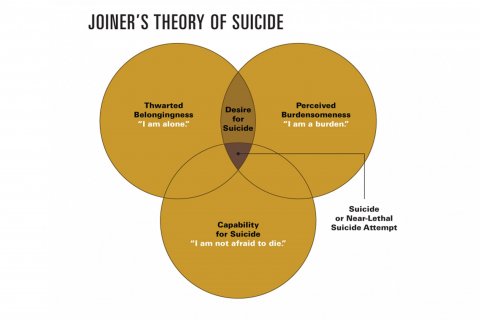
It's a "clearly delineated danger zone," a set of three overlapping conditions that combine to create a dark alley of the soul. The conditions are tightly defined, and they overlap rarely enough to explain the relatively rare act of suicide. But what's alarming is that each condition itself isn't extreme or unusual, and the combined suicidal state of mind is not unfathomably psychotic. On the contrary, suicide's Venn diagram is composed of circles we all routinely step in, or near, never realizing we are in the deadly center until it's too late. Joiner's conditions of suicide are the conditions of everyday life.
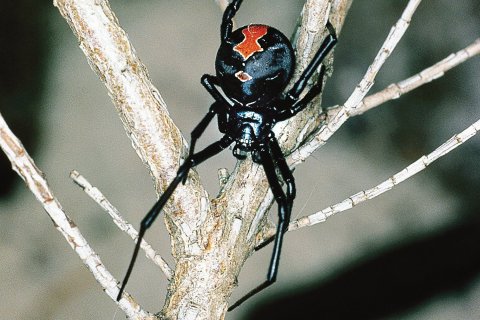
He calls the first "low belonging," and it's the most intuitive idea in his formula. Joiner argues that "the desire to die" begins with loneliness, a thwarted need for inclusion and connection. That explains why suicide rates rise by a third on the continuum from married to never been married. It also accords with the fact that divorced people suffer the greatest suicide risk, while twins have reduced risk and mothers of small children have close to the lowest risk. A mother of six has six times the protection of her childless counterpart, according to one study. She may die of work and worry, but not of self-harm.
The need to belong is so strong, Joiner says, that it sometimes expresses itself even in death. "I'm walking to the bridge," begins a Golden Gate Bridge suicide note he cites. "If one person smiles at me on the way, I will not jump." The writer jumped. He was alone, and so are more of the rest of us. Unattached is the new fancy-free, a strategy for success that translates to later marriages, easier divorces, fewer kids, and a tendency to keep running toward the next horizon, skipping family dinner in the process.
Twelve years and a tech revolution after Robert Putnam wrote Bowling Alone, his treatise on the decline in American community, the institutions that used to bind America together have, if anything, crumbled even further. People tell surveyors that the world has become less helpful, trustworthy, and fair. It's a place where you work longer at more deadening jobs for less pay, your life pulsing away with each new email, or worse, each additional hour on your feet. What's deadly about all this is the loss of what Joiner calls "reciprocal care." When people have no shoulder to lean on, they feel more isolated, and that isolation can be lethal.
Maybe Facebook is not "making us lonely," as Stephen Marche argued in an Atlantic cover story last spring. But Facebook doesn't help. "The greater the proportion of online interactions, the lonelier you are," John Cacioppo, a professor at the University of Chicago and the world's foremost expert on loneliness, told Marche. The opposite is also true: more face time, less loneliness. But as you might expect, the trend lines in our relationships are all in one direction.
The life-saving power of belonging may explain why, in America, Hispanics and African-Americans have lower suicide rates than whites.
For her 2011 book, Alone Together, MIT psychologist Sherry Turkle interviewed more than 450 people, most of them in their teens and 20s, about their lives online. She's the author of two prior tech-positive books, but this time she discovered a sadder, more antiseptic world, a place where people turn to their machines more than each other. She even identified a long-term trend toward sex with robots, a future where we'll prefer mechanical company over the mess of human interaction. (And here you thought it was hard enough to live up to our current crop of battery-powered lovers: the flicker of Internet porn, the hum of a bedside power tool). After a decade of decline in face-to-face gatherings, Mark Silva, CEO of Great Unions, one of the nation's largest reunion-planning companies, launched a new marketing pitch: "Unplug for a night." He might now be justified to add: "Or else."
The life-saving power of belonging may help explain why, in America, blacks and Hispanics have long had much lower suicide rates than white people. They are more likely to be lashed together by poverty, and more enduringly tied by the bonds of faith and family. In the last decade, as suicide rates have surged among middle-aged whites, the risk for blacks and Hispanics of the same age has increased less than a point—although they suffer worse health by almost every other measure. There's an old joke in the black community, a nod to the curious powers of poverty and oppression to keep suicide rates low. It's simple, really: you can't die by jumping from a basement window.

Joiner calls his second condition "burdensomeness," and it may be as emotionally intuitive as loneliness. When people see themselves as effective—as providers for their families, resources for their friends, contributors to the world—they maintain the will to live. When they lose that view of themselves, when it curdles into a feeling of liability, the desire to die takes root. We need each other, but if we feel we are failing those we need, the choice is clear. We'd rather be dead.
This explains why suicides rise with unemployment, and also with the number of days a person has been on bed rest. Just the experience of needing and receiving help from friends—rather than doing for oneself and others—can make a person pine for death. We're a gregarious species, but also a gallant one, so fond of playing the savior that we'd rather die than switch roles with the saved. In this way suicide isn't the ultimate act of selfishness or a bid for revenge, two of the more common cultural barbs. It's closer to mistaken heroism.
If suicide has an evolutionary component, as Joiner believes it might, this is where it manifests itself. Humans are not the only animals that commit suicide. Bumblebees kill themselves as a defense against parasites, abandoning the nest to save it. Pea aphids do something similar. They use a kind of suicide bomb that maims ladybugs, their biggest predator, to save their own kind. Higher up in the animal kingdom, male lions sacrifice themselves on the savannas: they expose their throats to attacking clans in an effort to give other family members a chance to escape. A similar instinct may still linger in our DNA, colliding uncomfortably with the frailties and banalities of modern life.

Has there ever been a society that does more than our own to make people feel like ineffective animals? Whole neighborhoods are caught in federal catch nets, incarcerated or snared in a cycle of government benefits. Millions more are poor or near poor, most likely stuck that way. And never have Americans been heavier, or sicker. One in five people in middle age suffers multiple chronic diseases, double the rate of a decade earlier. If Joiner is right, all these developments are as hard on the mind as on the body. As one of the suicide notes Joiner quotes puts it: "Survival of the fittest. Adios. Unfit."
The recession can't explain the new trends in suicide, but longer-term structural changes in the economy may undergird many of them. Only recently have economists begun to focus on the psychological impact of income inequality, tying the wealth and happiness of all to the risk of suicide for some. If you make 10 percent less than your neighbor, for example, you are 4.5 percent more likely to die by suicide, according to a paper led by Mary C. Daly, who works for the Federal Reserve Bank in San Francisco. In an earlier study, she and colleagues found that suicide rates generally rise with measures of national "happiness," a fact that accords nicely with Joiner's ideas about alienation and burdensomeness. It's hard to be sad and alone, and even harder if others seem too happy to disturb.
If Joiner is right about the suicidal peril of feeling useless, then long-term changes in the economy can also help explain the new demographics of suicide. As the U.S. workforce has transitioned from brawn to brain over the past three decades, women have matched or overtaken men as a percentage of all job holders. In doing so, however, they seem to acquire some of the traditional male risk for suicide when their performance in those roles falters. That could be why the suicide shift is stark among middle-aged educated women, according to forthcoming research by Hyeyoung Woo, a sociologist at Portland State University. They are the rare group where more school is associated with more opportunity—but also more self-harm.
Among their middle-aged male counterparts, the opposite is true: those with less education have a greater suicide risk. The states with the highest suicide rates tend to be clustered in the South and the Mountain West, areas with a lot of white men and guns, a historically bad combination for self-harm. This suicide belt is also defined by what psychologists have dubbed a "culture of honor." As Joiner has discovered, that means higher murder rates but even more-exaggerated suicide rates, a fact he attributes to millennia of old masculine codes meeting a disappearance of blue-collar jobs unlikely to reverse itself. Give me honor, or give me death was a safer personal motto when honor could still be readily found.
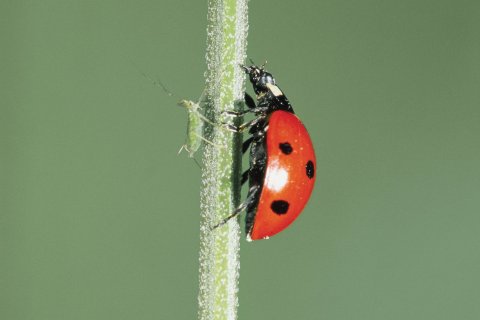
Even people in their teens and earlier 20s may discover the lethal effects of unemployment. Krysia Mossakowski, a sociologist at the University of Hawaii, has found that people unemployed for long stretches during their young years are far more likely to show signs of depression and alcoholism as they approach middle age. This finding held regardless of psychological history, and it was unshakable even among those young people who went on to flourish in the workforce. In Japan, meanwhile, most mental-health-related disability claims are filed by people who entered the labor force during the economically "lost decade" of the 1990s. They're in their 30s now, and increasingly depressed.
But then again so is everyone. The trends in suicide in both America and abroad are mirrored by devastating changes in behavior and mental health. In the last two decades, for example, there's been a 37 percent increase in the years of life lost to clinical depression, anxiety, alcohol and drug abuse, and other disorders of the mind, according to the batch of previously unpublished GBD data provided to Newsweek. As a group, these disorders are the leading cause of disability in the world, vexing developing countries in particular, and the United States most of all. In the land that commercialized positive thinking and put pill bottles in every drawer, depression has emerged as the most debilitating condition we face.
Joiner calls his final condition for suicide "fearlessness," and all that really means is "the ability to die," an ability he says people have to develop over time. That's because it's hard to kill yourself. This should be obvious. The human body is built to endure, the mind rigged to flee from death, which is why so many people flinch. They apply the brakes, pull up at the railing, beg someone to pump their stomach, lever themselves off the tracks, or just pass out before they can inflict the damage they intend.
Athletes, doctors, prostitutes, and bulimics all share a heightened risk of suicide. All have a history of tamping down the instinct to scream.
In this way, suicide isn't about cowardice. It's not painless or easy, like pulling the fire alarm to get out of math class. It takes "a kind of courage," says Joiner, "a fearless endurance" that's not laudable, but certainly not weak or impulsive. On the contrary, he says, suicide takes a slow habituation to pain, a numbness to violence. He points to that heightened suicide risk shared by athletes, doctors, prostitutes, and bulimics, among others—anybody with a history of tamping down the body's instinct to scream, which goes a long way to unlocking the riddle of military suicides.
For the population at large, it might seem mildly reassuring at first. After all, most of us don't fall into these categories. But Joiner believes there may be a side door to fearlessness: exposure to violence in media. Remember this debate? Well, it's basically over. "The strength of the association between media violence and aggressive behavior," the American Academy of Pediatrics concluded in 2009, "is greater than the association between calcium intake and bone mass, lead ingestion and lower IQ, and condom nonuse and sexually acquired HIV infection, and is nearly as strong as the association between cigarette smoking and lung cancer." In one of the studies reviewed, a social psychologist showed students pictures of a man shoving a gun down another man's throat, among other images. The people who had been exposed to more violent media didn't respond. They were numb.
Joiner first sketched his theory about a decade ago, which isn't all that different from yesterday in the science world, a place where evolution is still just a theory. But his ideas have already survived direct challenges, and he has defended them before ballrooms of academics and long tables lined with government officials. The Guggenheim and Rockefeller foundations have forked over cash, as have the National Institutes of Health and the Pentagon, which recently tapped him to co-direct its Military Suicide Research Consortium. In two books—Why People Die by Suicide (2005) and Myths About Suicide (2010), both published by Harvard University Press—and hundreds of articles, he has built a testable model. It's "elegant" in the words of Aaron Beck, a University of Pennsylvania psychiatrist, known as the father of cognitive therapy. It's "insightful" and "effective," added the American Psychological Association, which published a $60 volume of Joiner's work to help guide clinicians suffering their own Galveston crossroads.
As we discussed suicide in his office, the Florida sun blazing through a picture window, Joiner gently bounced side to side in a swivel chair. He wore blue jeans and a short-sleeve button-down in the buff color of a cartoon desert. He spoke in careful, complete sentences. But it was hard to concentrate once I noticed the trophy-size silver fish and coiled snake mounted near his computer. "That's a piranha," he explained, "and that's a rattlesnake." He keeps both as reminders of this principle that killing your own kind, let alone yourself, is hard to do. "The piranha won't do it. They'll kill us, but they won't kill each other," he says. "Same with rattlesnakes. They have venom and fangs and everything, but they don't use those. They wrestle. It's a rule of nature, not a hard fact, but a rule of thumb: you don't kill your own."
And yet his father did. He grew lonely, letting old friendships die as he built his career. He formed an identity through work, one that left him rudderless when he entered semi-retirement. Here was his sense of not belonging, a feeling so acute he tried to join an African-American church, apparently lured by the community and the possibility of connection. The sense of burdensomeness came later, as his dark moods prevented him from being the pillar he had been within his family. That gave rise to the desire to die, according to Joiner's theory.
But the ability to die took root earlier and grew much more slowly. Joiner's father had a lifetime of painful physical experiences—freak accidents, sporting injuries. He was also a fisherman, a man who knew how to use a knife and was comfortable with blood on his hands. Joiner recalls one fishing trip in particular, father and son unzipping the sea in a boat that felt like a 25-foot piece of driftwood in the heaving Atlantic. When a sudden storm developed, Joiner watched his father wrestle the waves, trying to keep the tiny yacht from capsizing. He gripped the wheel until it snapped off, at which point he steered using all that remained, a shattered column, his hands slashed and bleeding.
This, in the end, is what killed him, Joiner says: the fact that his father was strong enough, in a perverted way, to fall on his own knife. This, and the fact that he found himself in the center of the three circles of risk. After decades of walking in and out of them, much as we all do, he walked into the middle.
These days, Joiner's thoughts have shifted toward prevention. If he's right about suicide, the ability to foil one of the three variables is the ability to save a life. Smart clinicians can do it, but it's not easy to get people into treatment. There's the cost, for one thing, but more than that, there's the shame and the stigma. Suicide is the rare killer that fails to inspire celebrity PSAs, 5K fun runs, and shiny new university centers for study and treatment. That has to change, says Joiner. "We need to get it in our heads that suicide is not easy, painless, cowardly, selfish, vengeful, self-masterful, or rash," he says. "And once we get all that in our heads at last, we need to let it lead our hearts."
Need help? In the U.S. call 1-800-273-8255 for the National Suicide Prevention Lifeline.





